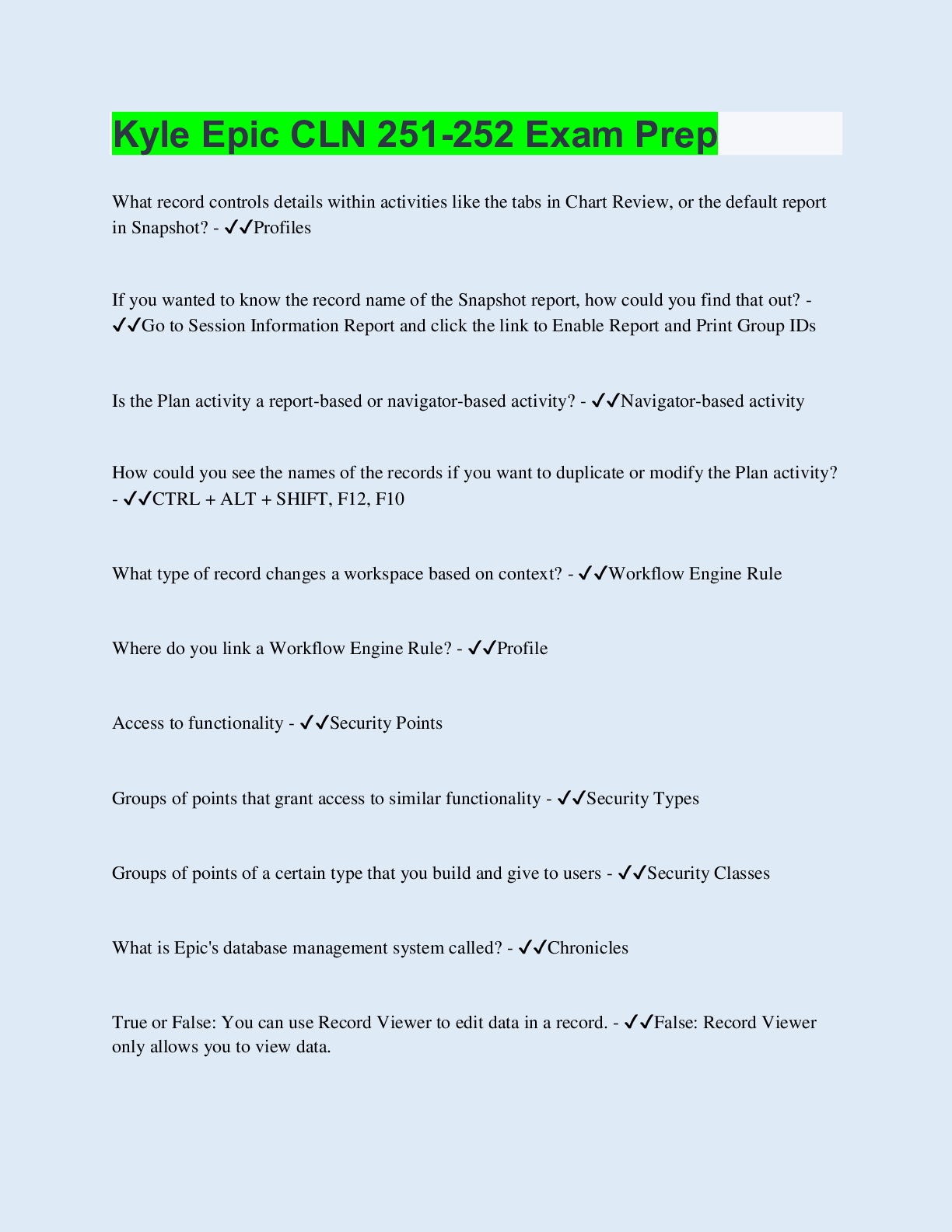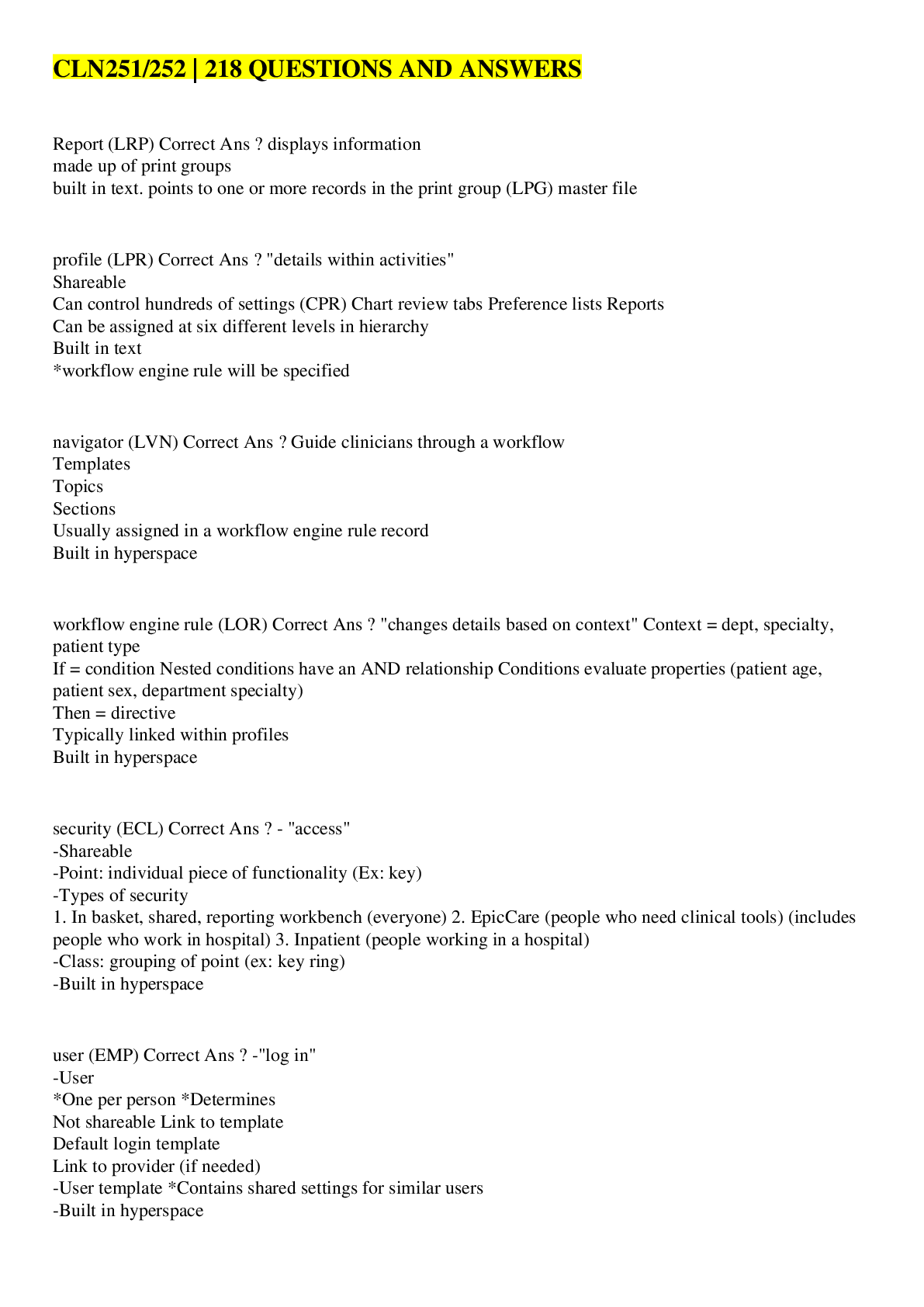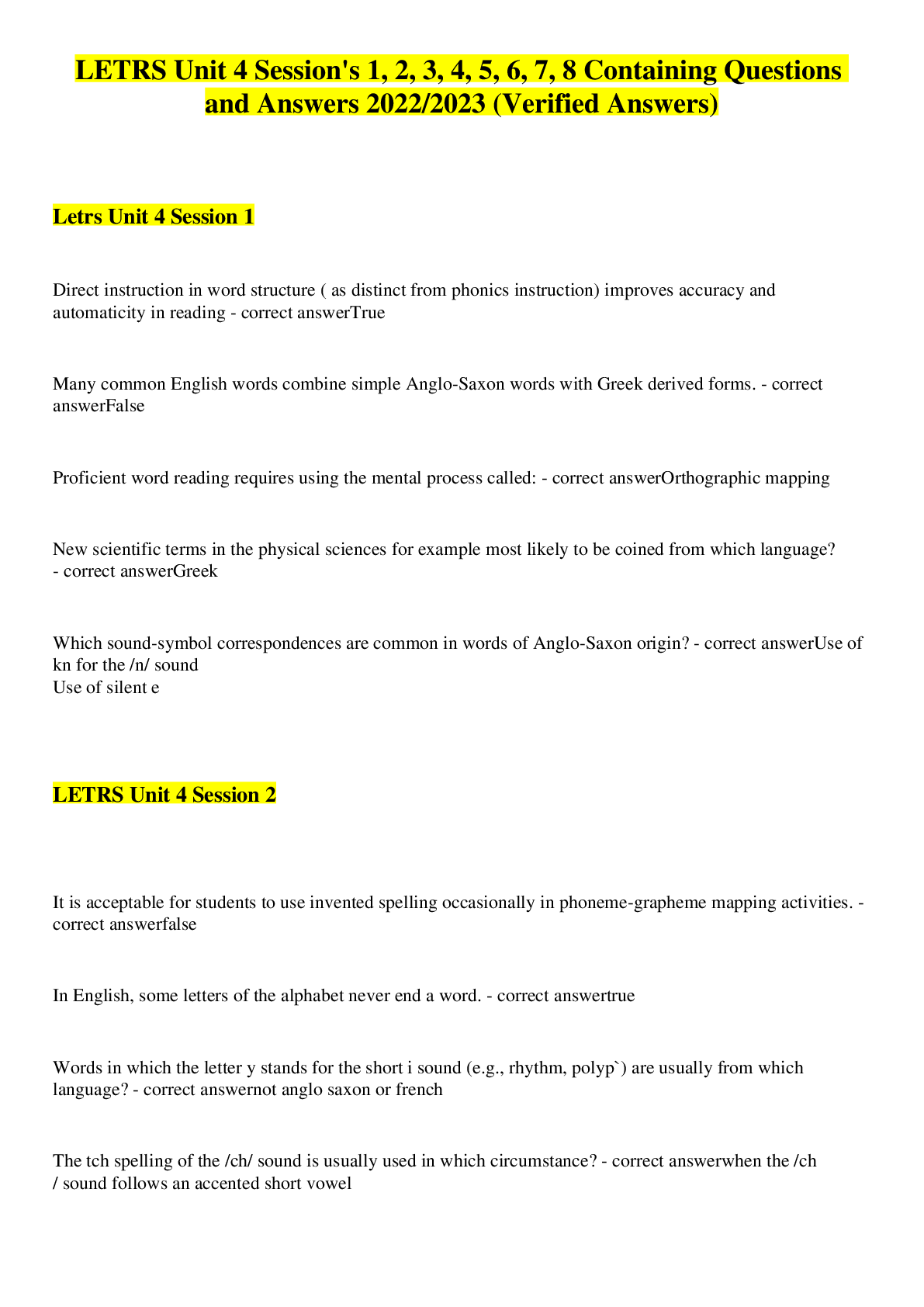NURSING ATI Pharmacology 2019 A QUESTIONS AND ANSWERS COMPLETE SOLUTION
Document Content and Description Below
1) A nurse is preparing to administer medication to a pt who has gout. The nurse discovers that an error was made during the previous shift and the pt received atenolol instead of allopurinol. Which ... of the following actions should the nurse take first? -Obtain the client's blood pressure. = CORRECT ANSWER When using the nursing process, the first action the nurse should take to prevent injury to the client is to assess the client for adverse effects of atenolol, such as hypotension. -Contact the client's provider. The nurse should contact the provider, who can provide direction to the nurse to prevent injury to the client. However, there is another action the nurse should take first. -Inform the charge nurse. The nurse should alert the charge nurse about the medication error. However, there is another action the nurse should take first. -Complete an incident report. The nurse should complete an incident report, which is used as part of a facility's quality assurance program. However, there is another action the nurse should take first. 2) A nurse is teaching a pt about Cyclobenzaprine. Which of the following pt statements should indicate to the nurse that the teaching is effective? -"I will have increased saliva production." The client should use gum or sip on water to prevent dry mouth, which is an adverse effect of cyclobenzaprine. -"I will continue taking the medication until the rash disappears." The client should take cyclobenzaprine for treatment of muscle spasms. This medication does not affect skin rashes. -"I will taper off the medication before discontinuing it." = CORRECT ANSWER The client should taper off cyclobenzaprine before discontinuing it to prevent abstinence syndrome or rebound insomnia. -"I will report any urinary incontinence." The client should report any urinary retention because of the anticholinergic effects caused when taking cyclobenzaprine. 3) A nurse is assessing a pt 1 hour after administering Morphine for pain. The nurse should identify which of the following findings as the best indication that the Morphine has been effective? -The client's vital signs are within normal limits. Vital signs can be within normal limits for clients who have pain. -The client has not requested additional medication. Clients often do not request medicine even when they are experiencing pain. -The client is resting comfortably with eyes closed. The client might rest with their eyes closed as a method to try to manage pain. However, this does not indicate that the pain is controlled. -The client rates pain as 3 on a scale from 0 to 10. = CORRECT ANSWER The client's description of the pain is the most accurate assessment of pain. 4) The nurse is assessing a pt after administering a second dose of Cefazolin IV. The nurse notes the pt has anxiety, hypotension, and dyspnea. Which of the following medications should the nurse administer first? -Diphenhydramine The nurse should administer diphenhydramine, an antihistamine, as a second-line medication to decrease angioedema and urticaria following anaphylaxis. However, evidence-based practice indicates that administering another medication is the priority. -Albuterol inhaler The nurse should administer albuterol, a bronchodilator, for a client who has dyspnea from bronchospasms during anaphylaxis. However, evidencebased practice indicates that administering another medication is the priority. -Epinephrine = CORRECT ANSWER According to evidence-based practice, the nurse should administer epinephrine first to induce vasoconstriction and bronchodilation during anaphylaxis. -Prednisone The nurse should plan to administer prednisone, a glucocorticoid, for the urticaria following anaphylaxis and to prevent a delayed anaphylactic reaction from occurring. However, evidence-based practice indicates that administering another medication is the priority. 5) A nurse is providing teaching to a pt who is to begin taking Oxybutynin for urinary incontinence. Which of the following adverse effects should the nurse include in the teaching? (select all that apply) -Dry mouth= CORRECT ANSWER Oxybutynin is an anticholinergic agent that can cause dry mouth. -Dry eyes= CORRECT ANSWER Oxybutynin is an anticholinergic agent that can cause dry eyes and mydriasis, or pupil dilation. -Blurred vision= CORRECT ANSWER Oxybutynin is an anticholinergic agent that can cause blurred vision due to an increase in intraocular pressure. -Bradycardia Oxybutynin can cause several cardiovascular adverse effects such as a prolongation of the QT interval, palpitations, hypertension, and tachycardia. -Tinnitus Oxybutynin can cause several sensory adverse effects including increased intraocular pressure. The nurse should instruct the client to report eye pain, seeing colored halos around lights, and a decreased ability to perceive light changes. However, tinnitus is not an adverse effect associated with oxybutynin administration. 6) A nurse is preparing to administer PO Sodium Polystyrene Sulfonate to a pt who has hyperkalemia. Which of the following actions should the nurse plan to take? -Hold the client's other oral medications for 8 hr post administration. The nurse should hold the client's other oral medications for 6 hr before and after administration of sodium polystyrene sulfonate. -Inform the client that this medication can turn stool a light tan color. Sodium polystyrene sulfonate will not alter the color of the client's stool. -Keep the client's solution in the refrigerator for up to 72 hr. Sodium polystyrene sulfonate solution is stable for 24 hr when refrigerated. -Monitor the client for constipation. = CORRECT ANSWER The nurse should monitor the client for the adverse effect of constipation and report it to the provider because this can lead to fecal impaction. 7) A nurse is preparing to administer Heparin subcutaneously to a pt. Which of the following actions should the nurse plan to take? -Administer the medication outside the 5-cm (2-in) radius of the umbilicus.= CORRECT ANSWER The nurse should administer the heparin by subcutaneous injection to the abdomen in an area that is above the iliac crest and at least 5 cm (2 in) away from the umbilicus. -Aspirate for blood return before injecting. The nurse should not aspirate by pulling back on the plunger of the heparin syringe to check for a blood return, because this will cause the injection site to bruise. -Rub vigorously after the injection to promote absorption. The nurse should apply firm pressure to the injection site for 1 to 2 min after the administration of the heparin to prevent bruising. -Place a pressure dressing on the injection site to prevent bleeding. The nurse does not need to apply a dressing over the injection site if pressure is held for at least 1 min to prevent bleeding. [Show More]
Last updated: 1 year ago
Preview 1 out of 16 pages

Reviews( 0 )
Document information
Connected school, study & course
About the document
Uploaded On
Aug 02, 2022
Number of pages
16
Written in
Additional information
This document has been written for:
Uploaded
Aug 02, 2022
Downloads
0
Views
45

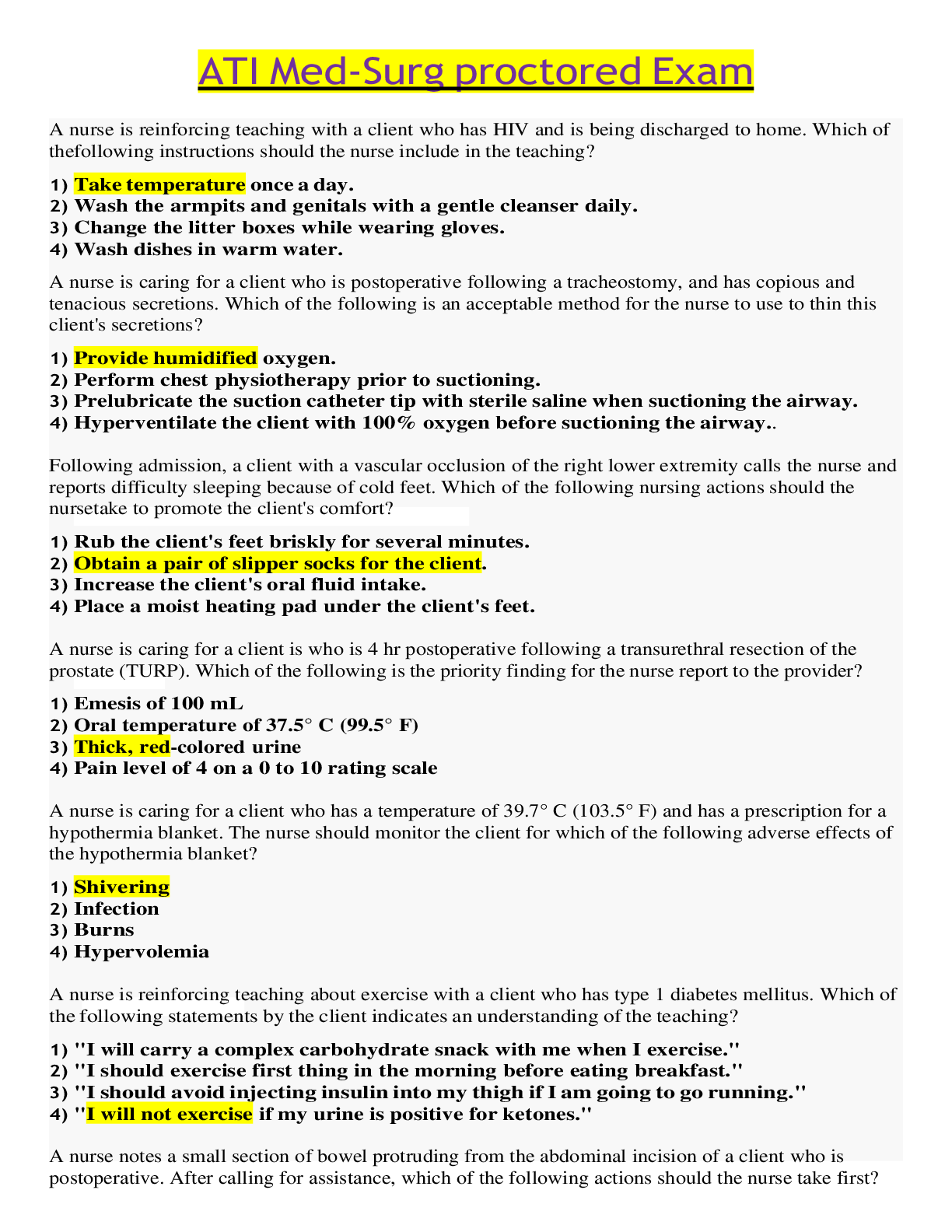
.png)








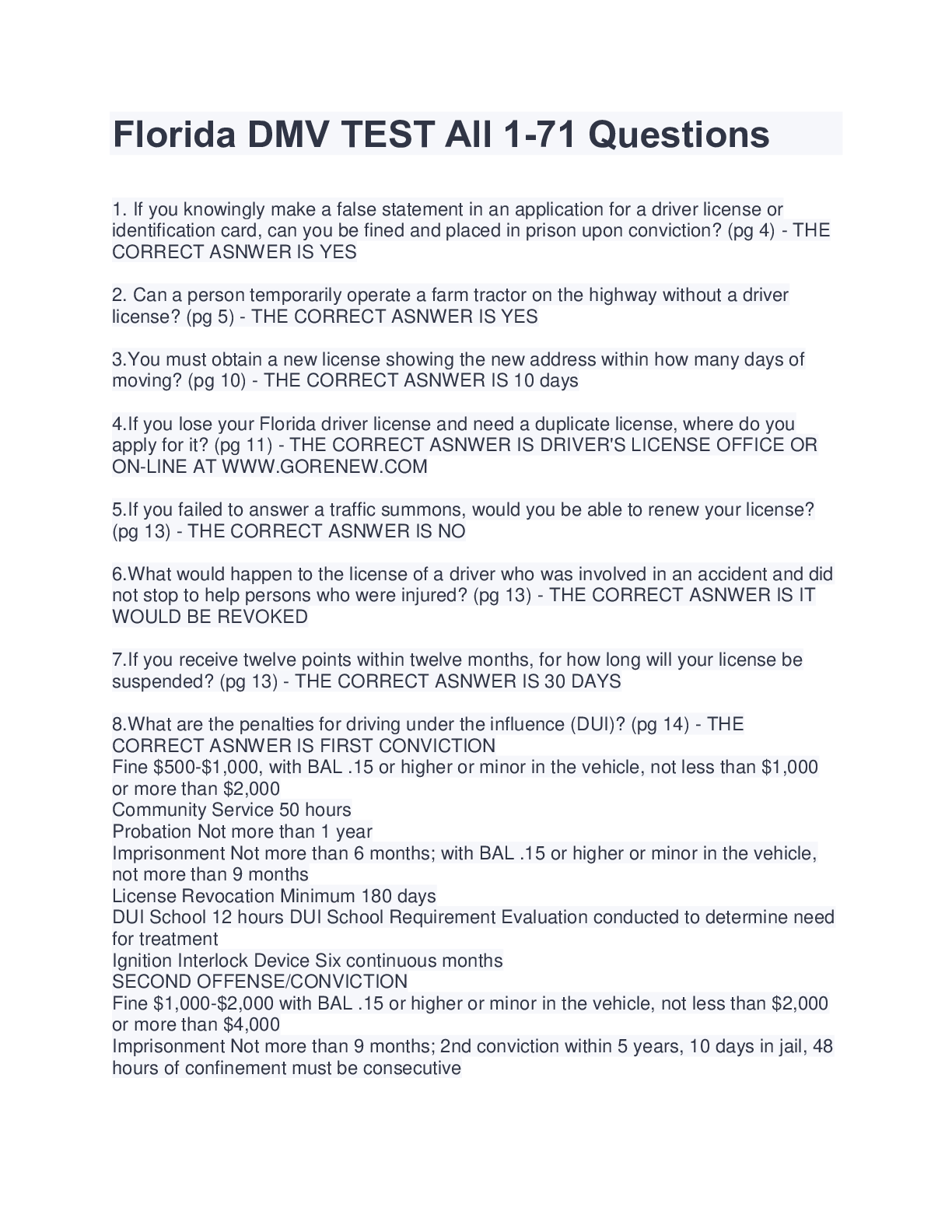
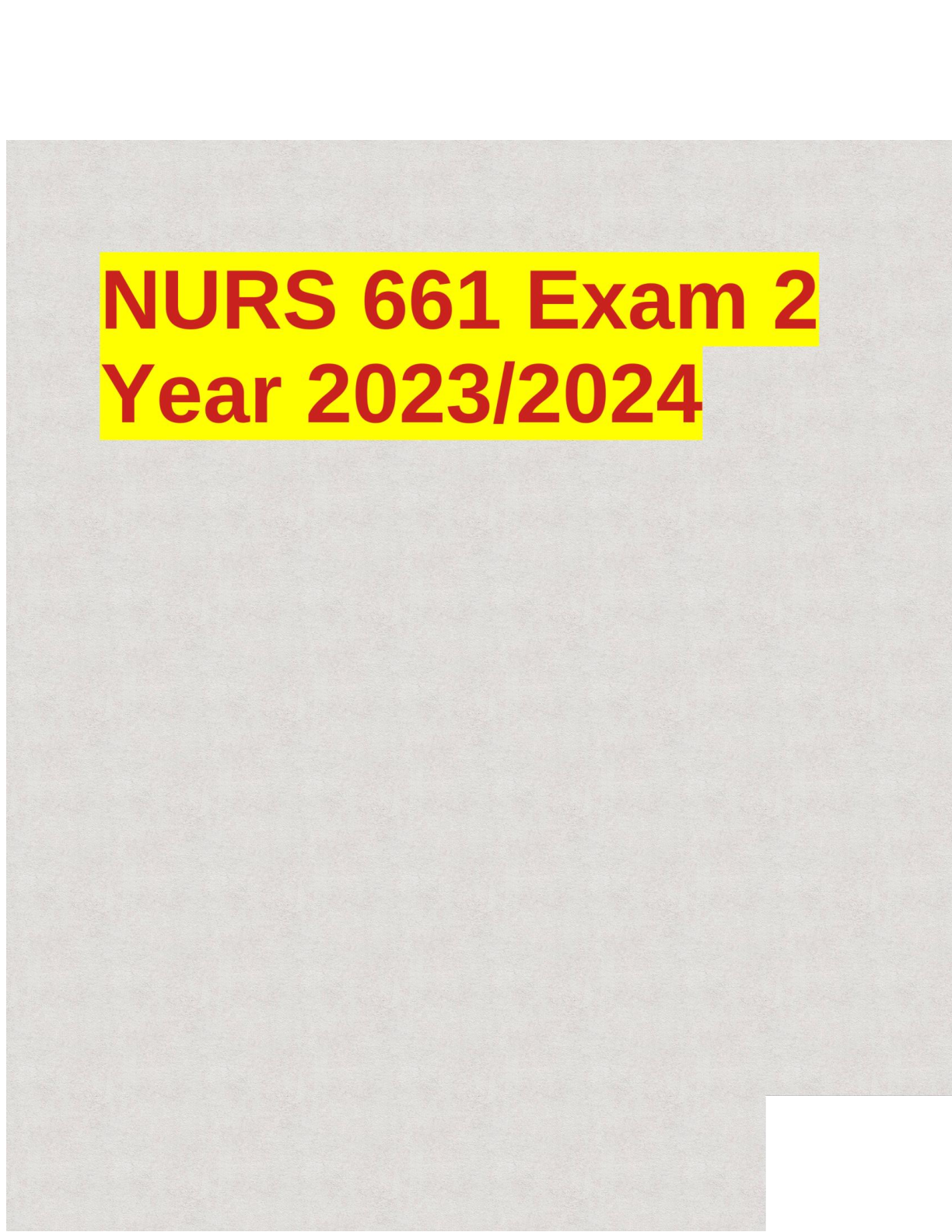

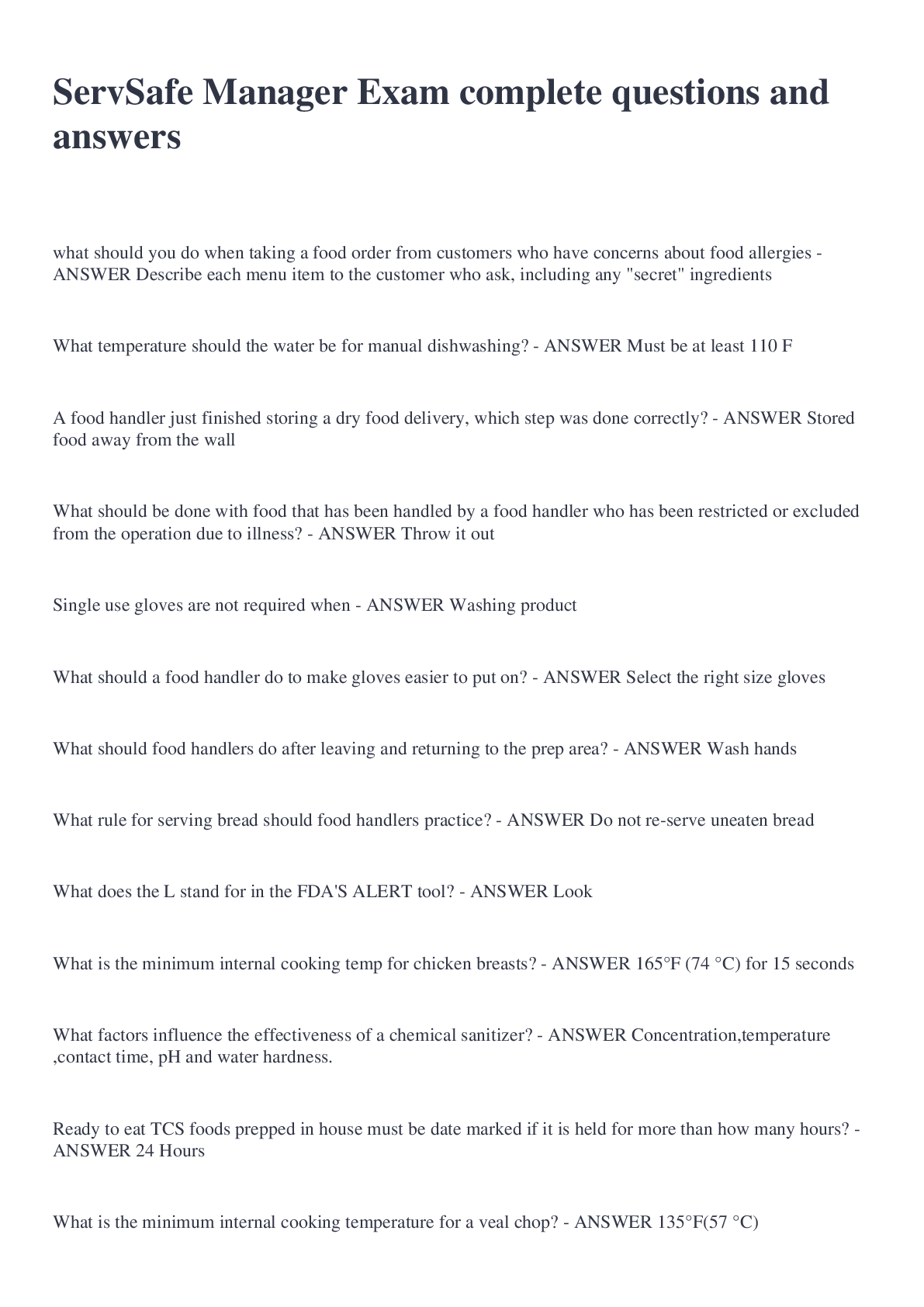


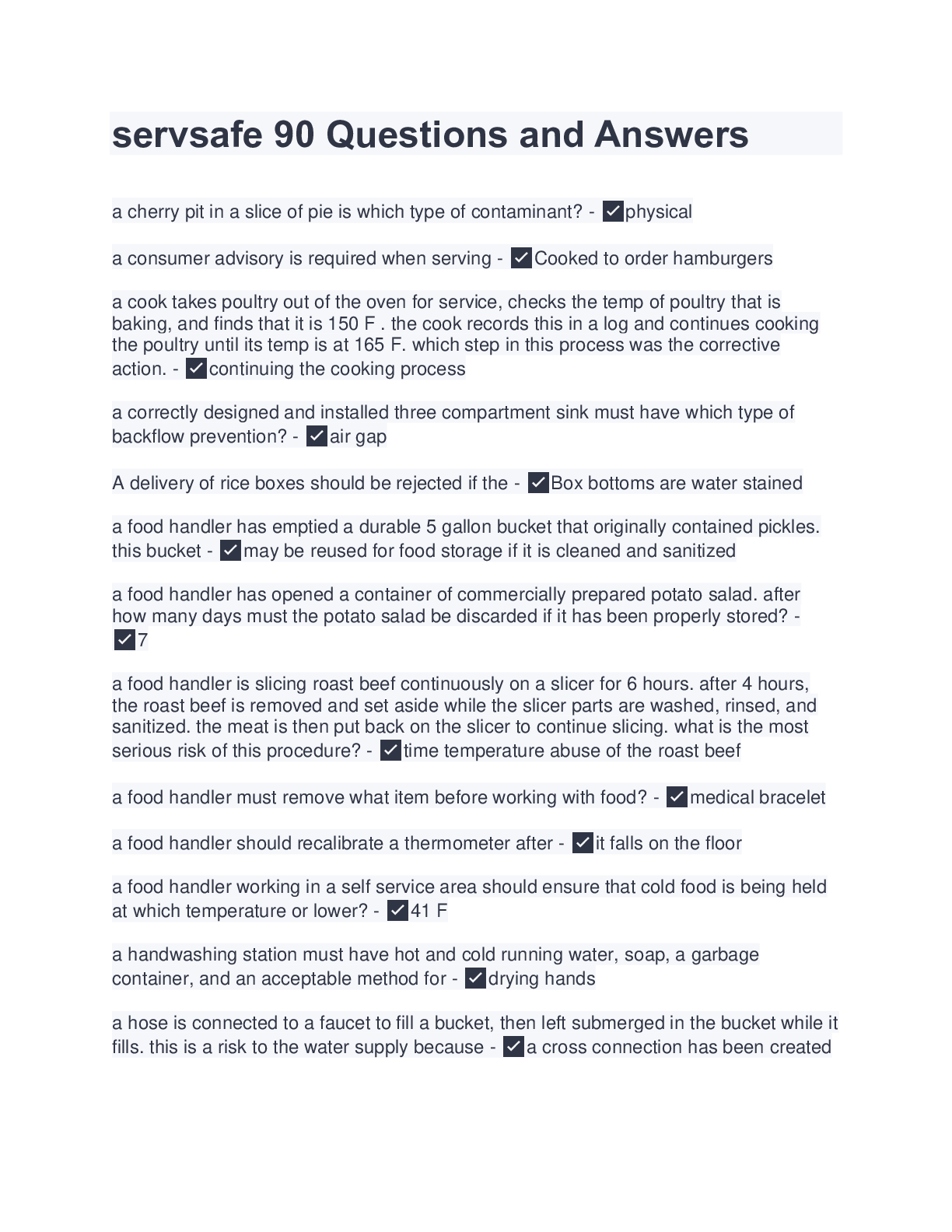
.png)


